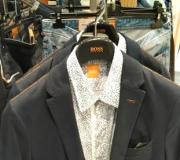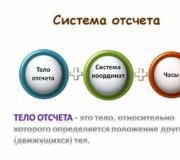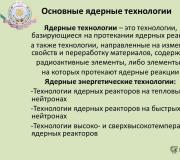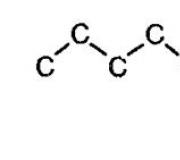Jim Thompson brand store. Visiting information

Thailand - Jim Thompson House Museum in Bangkok.Jim Thompson- American with interesting biography, who came to Thailand for permanent place residence after World War II. It was thanks to him that the Thai silk industry was revived. For this he was awarded the Order of the White Elephant. In Bangkok today there is a house-museum of Jim Thompson, which is visited with pleasure by visitors from different countries.
The house museum was founded in 1959. It consists of 6 buildings made in traditional Thai teak style. What's amazing is that some of the museum's buildings are over two hundred years old! In order to create them, parts were transported from different cities, including from the capital of ancient Thailand - Ayuthai, and then assembled on the spot.
Jim Thompson personally made sure that his house was open to the public. Upon entering the monastery, you need to leave your shoes in the hallway, which corresponds to ancient Thai traditions.
Thompson loved his home very much and tried to furnish it as original as possible. For example, his dining table looks like two mahjong tables that are connected to each other. In addition, Jim Thompson was known as a collector of antiques, which he confirmed with his purchases. In his house there are many objects of art not only from Thailand, but also from other Asian countries - porcelain, figurines from Burma, silk-screen printing, paintings by Thai artists.
Moreover, in the garden you can admire Buddha statues, many of which were created quite a long time ago - the 8th, 13th and 14th centuries. Where there used to be a kitchen (on the second floor of the house), there is a collection of multi-colored Chinese porcelain. You can see five primary colors on it - red, black, white, blue or green. The combination of this color range called Benjarong.
Thompson's other hobby is gardening. The territory of the garden plot contains amazing flowers and plants, and the house itself seems to be bathed in greenery. It's hard to believe that this beauty is located in the heart of Bangkok. All visitors should definitely take a walk through the mysterious jungle labyrinth.
The museum invites everyone from 9:00 to 17:00. The most late time for entry – 16:30. A ticket for a visit will cost 100 baht for adults, and 50 baht for students and children.
You can get to the museum by taking the Skytrain Silom Line to the National Stadium. The house museum is located on Soi Kasamansam, on the opposite side of Rama 1 Rd.
The name Jim Thompson is known not only because of his house, but also because of the chain of stores that bear his name. There are 16 of them in Thailand, including several at Bangkok Suvaranabhumi Airport. In addition, on the territory of the museum there is his store, which sells unique silk products.
Jim Thompson disappeared under unexplained circumstances in 1967 while on vacation in Malaysia. The body was not found and nothing is known about it. However, after decades of it legendary name is becoming even more popular.


Jim Thompson House Museum (Bangkok, Thailand) - exhibitions, opening hours, address, phone numbers, official website.
This place combines, perhaps, all the criteria that are important for a wide variety of tourists. Do you want to see amazing nature, unique architecture, or what you like? interesting story and local culture? Or maybe useful shopping? As you can see, there is something for everyone at the Jim Thompson House Museum.
It is located in the capital of Thailand, Bangkok, and today it consists of 6 wooden teak houses built in classic Thai style among greenery, flowers and next to a canal. Some of the buildings are over 200 years old! The houses were collected in one place from several provinces of Thailand in 1959 - this was ordered by the owner of all this wealth, Jim Thompson.
The collection of the Jim Thompson House Museum spans 13 centuries - it includes signature Chinese porcelain, antique wooden figurines, Buddha drawings, ancient stone sculptures, as well as paintings by famous Thai artists.
Historically, foreigners have always made great contributions to the development of Thailand. Jim Thompson was one of these people - he was originally from America. After him mysterious disappearance The house and the rest of the collection are managed by The James H. W. Thompson Foundation.
A little history
Jim Thompson is an interesting person. IN post-war years this native American made his fortune in silk production in Thailand. In addition, the businessman participated in cultural life states. So, Thompson became interested in restoring local antiques, and after a while he collected huge collection antiques and decided to open a museum. And a little later he began transporting ancient houses, which he installed in his garden.
In 1967 - when Thompson was at the height of his success - he disappeared under mysterious circumstances. While on vacation with friends in Malaysia, the businessman decided to take a walk alone, and no one has seen him since.
What to see?
Jim Thompson's collection spans 13 centuries - precious Chinese porcelain, ancient wooden figurines, Buddha drawings, stone sculptures, paintings famous artists Thailand. Museum visitors are introduced to the history of the Thai people and the resumption of the silk industry, as well as the biography of Thompson himself. A Thai woman in a traditional silk dress is dancing at the entrance to the museum.
In addition, a company store is open on the territory of the house-museum. On sale are high-quality silk products and other items under the Jim Thompson brand: scarves, bags, shirts, robes, etc. However, many tourists note that the prices here are quite inflated.
Practical information
Address: Bangkok, Rama 1 Road, 6 Soi Kasemsan 2, Jim Thompson House. Web site
You can get to the Jim Thompson House Museum by taxi, tuk-tuk, bus (No. 204, 73, 48, 47, 15) or metro (at the National stadium station you need to find exit No. 1, turn right onto Soi Kasemsan 2 and go straight).
Opening hours: from 9:00 to 18:00 daily. The cost of visiting is 150 THB, students under 22 years old - 100 THB. Prices on the page are as of July 2018.
Photography is allowed only on the street; you cannot go into the museum on your own - you need to wait for a group led by a guide to gather (they do not charge an additional fee for this, excursions are not conducted in Russian).
Add a review
Track
Other attractions nearby
Bangkok and excursion surroundings
- Where to stay: IN Bangkok Absolutely all categories of hotels are available to tourists - from the best to the worst. Most quality hotels are located in Siam Square, Sukhumvit and Silon streets. Accommodation in Kanchanaburi Can be recommended to fans of “excursion” - there are many attractions in the surrounding area. IN Ayutthaya It makes sense to be partial to exoticism in general and Hinduism in particular.
- What to see: Big Royal Palace, Temple of the Emerald Buddha and more than 400 temples, many museums and a planetarium in Bangkok; military museum and bridge over the river Kwai, waterfalls, temples and several magnificent national parks V Kanchanaburi ; Grand Palace, the “golden” Mahathat temple and the wonderful National Museum in Ayutthaya. Among other things, you can go on an excursion to the many-sided
The Jim Thompson House Museum is located in and attracts thousands of tourists every year, thanks to the unique personality of its former owner. In cozy small buildings, built in classic Thai style, there is an exhibition demonstrating the life and collections of an American who came to the warm country after the Second World War.
A lover of travel and exotica, he came here for permanent residence and, thanks to his inquisitiveness and perseverance, gave a new birth to the dying textile industry. Jim fell so in love with local culture, that he spared no money and time for its revival. Some of the museum’s buildings are more than 200 years old; building components for them were brought even from Ayutthaya, former capital. According to tradition, the houses are raised above the ground to protect them from flooding during the rainy season.
Possessing an original vision of the world and a flexible mind, John independently designed the interior for his home: the dining table consists of two parts, which are mahjong stands, as well as silk-screen printing, Burmese figurines and porcelain - antiques are arranged with the taste of a true esthete. The nearby tropical garden is famous for its 8th century statues. Unusual plants captivate the eyes of visitors, because the founder of the site was seriously involved in gardening. His abode is entwined with green branches, and behind him lies a jungle labyrinth.
The Thompson surname is known not only because of textiles and silk, but also because of the network of stores that sell high-quality and practical products made from this material. There are boutiques bearing his name both abroad and in Thailand, where there are 17 of them. The enterprising American citizen went missing in 1967 in Malaysia. The circumstances of his disappearance still remain unclear, and his body remains unfound.
How to get there?
Guests can get to the house-museum by train "". You need to get off at the National Stadium stop near Soi Kasamasan.
What is the price?
Doors are open from 9am to 5pm, with the latest entry time being 4:40pm. The ticket price depends on age: an adult will pay 100 baht, and a child only 50.
If you are tired of the bustling streets of Bangkok, check out this museum. It is located near the center, next to the national stadium and the metro station of the same name.
Near the museum there is a small but very cozy garden. The house itself contains various works of oriental art.
Address: 6 Soi Kasemsan 2, Rama 1 Rd, Bangkok 10110, Thailand
Phone: +66 2 216 7368
Ticket price: adult 100 baht, child - 50 baht
ABOUT Jim Thompson.
Businessman from America Jim Thompson appeared in the capital of Thailand in the early 50s and in 10 years managed to revive the long-extinct Thai silk industry. He proved himself not only a talented businessman, but also a connoisseur of Thai art, having collected in his home a large and valuable collection of antique objects, which later formed museum exhibition. In 1967, Jim went for a walk in Malaysia and disappeared, leaving behind a factory, a museum and a mysterious legend about an eccentric American industrialist who fell in love with the land and people of Thailand.
This bangkok museum located opposite the National Stadium building. You can get there by catching a taxi or going to the BTS Skytrain station Bangkok National Stadium Station.
Jim Thompson House is actually made up of five historic houses, representing various styles traditional architecture of Thailand. These houses, by order of Jim Thompson, were brought to Bangkok from different provinces of the country. All are built from teak in traditional Thai style.

Jim Thompson or James Harrison Wilson Thompson was born in the USA in 1906.
Even at school he showed big interest to art and therefore entered the University of Pennsylvania to study architecture. Jim Thompson practiced his profession in New York until 1940. When did the second one begin? World War he was enlisted in one of the divisions of the US strategic forces and in 1946, due to his work, he ended up in the capital of Thailand, Bangkok. This is where it started great story Jim Thompson's wealth and the revival of the Thai silk industry. When Jim Thompson left military service, he opened his own business related to the production of Thai silk in Bangkok. Thanks to him, the whole world learned about Thai silk.
Today Jim Thompson is a brand known not only in Thailand and Asia, but throughout the world.
The most mysterious thing in the entire story of Jim Thompson is his death. In 1967, Jim Thompson disappeared without a trace while walking in the Malaysian jungle. His body was never found.
_______________________________________________________________________________________________________
Production of Thai silk.
Thai silk production
The production of traditional Thai silk involves several stages. When the caterpillars are ready to turn into cocoons, they are placed in round baskets covered with cloth to protect them from insects. After the silkworms are completely transformed into cocoons, they are placed in hot, almost boiling water. The silk fiber from several cocoons is then wound onto a wooden spindle. To prevent the yarn from sticking, it is thoroughly washed by immersing the skeins in large tubs of hot water and then dried.


The coloring solution is prepared in advance, carefully settled and filtered. When the dye is ready, clean yarn is dipped into the bath and boiled, constantly spinning. Before the dyed yarn is spun into threads, it is washed in clean water so that the silk gives off excess dye, since the structure of the fiber is quite hygroscopic; then dried in the shade.

Silk yarn is spun into threads by hand on wooden bobbins. To get heavier and thick fabric, two or more threads are wound together, making the yarn denser. The more threads are twisted, the heavier and denser the silk fabric will be. Once the threads are ready, the bobbins are placed in the loom and fabric production begins.
Real Thai silk is woven only by hand, which gives it a naturally uneven surface structure and uneven edges. This is the main difference from smooth machine-spun fabric. The hand weaving process takes longer and requires special skills. An experienced weaver can make no more than 6 m of very complex weaving fabric in one day. Unique technologies for hand-made fabrics offer a wide range of colors and patterns. The palette of plain-dyed fabrics is represented by more than 130 colors, fabrics with printed patterns - more than 400.

Due to the fact that the width of the loom is 1 meter, the width of the fabric does not exceed this size - therefore, real Thai silk cannot have a larger width. If you are offered fabric with a width of more than 1 meter, you should know that this is an imitation, or, more simply, a fake, which often has nothing to do with real silk. Thanks to manual production, the color range can vary within very wide limits. For example, shades of one color can reach 10 or more tones.

Fabrics made from Thai silk vary in density. The term “density, layer” - 2 layers, 4 layers, 6 layers - determines the thickness of the thread with which the fabric is woven - the thicker the thread, the higher the density. Thus, the specific weight of fabric with density 2 is 100 g/m2, and the weight of fabric with density 4 is 125 g/m2. To make fabrics of density 2 (top photo), threads of the same thickness are used for weft and warp: such fabric is different smooth surface and a discreet matte sheen and belongs to the category of dress and blouse fabrics.
Density 4 fabric (bottom photo) is distinguished by a naturally uneven and heterogeneous surface structure, which is achieved by using thicker weft threads. Such fabrics resemble comb in appearance and belong to dress and costume fabrics.
Thai silk is widely used for making clothes (jackets, trousers, shirts, blouses, skirts, evening dresses, corsets, robes and much more), underwear, accessories, bedding, etc. In addition, it is widely used in textile interior design - tightening walls and ceilings, making screens and stained glass windows, decorating window structures and upholstering furniture... This is a truly exclusive, beautiful, environmentally absolutely flawless and fireproof material for you and your home.
The beauty of the fabric, noble appearance, uniqueness, originality, practicality and ease of care - these are the basis for the popularity of Thai silk.
_________________________________________________________________________________________
And so, we arrived at the Jim Thompson House Museum at about 12 noon.

Paid 250 baht for two adults and one child ticket.

There is a shop with silk products on site. The quality is excellent - the prices are appropriate.


Every 10 minutes a girl dressed in traditional Thai silk dresses dances at the entrance.

You cannot go into the museum and see everything on your own. Only in groups of about 10 people, with an English guide. They are recruited approximately every half hour. While we were waiting for our group to be recruited, Nicholas was figuring out how silk is produced.)




The area is very well and comfortably landscaped. In traditional Thai style. Quiet pleasant music is playing.


The houses themselves look very beautiful, ancient and mysterious.



Photography inside the house is prohibited. It's a pity. After all, the home of the silk king contained Buddhist sculptures, Chinese porcelain dishes, and various paintings, the oldest of which dates back to the 17th century. At one time, Thompson bought all this belongings for next to nothing at Asian flea markets. I still took a few pictures to show them to the readers of my blog. I hope I didn't bother anyone with this.




Notice the high thresholds in all rooms in the house. This was done, as the guide assured, so that a child crawling around the room would not be able to crawl out of it.


Dining room on the second floor.

The house is amazing! You want to stay in it and never leave.
PROS of visiting this place: you will immerse yourself in the amazing atmosphere of Thailand at that time.
CONS: you can’t touch anything, don’t take pictures. You can’t walk around the house by yourself and feel this fabulous place with every cell of your body.
To be the first to know about posts on my blog, you need to enter your email address at the bottom of the page and click “subscribe”.
You can peek at our life on Instagram - http://instagram.com/batirova_julia




